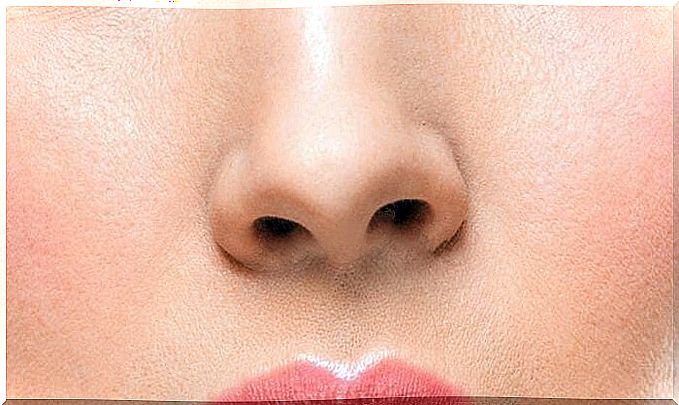The Sense Of Smell
The sense of smell has the function of helping humans to properly relate to their environment. In this sense, its mission is to keep you informed about olfactory stimuli to process and identify substances and objects.
It is true that it is not the most developed sense of the human being compared to other animals. However, scientist John McGann, from the University of New Brumswick, in Canada, commented in a publication in the journal Science that, in many respects, the smell of humans is more evolved than that of other animals.
Thanks to the sense of smell, part of the identification of the elements of the environment is possible, which contributes to the survival of the human being and, therefore, to their well-being. A study published in 2009 by the Journal of Medicine and Life affirms that the sense of smell is the oldest of the human beings and the main one to socialize with its surroundings.
Nose
The outer organ that governs the sense of smell is the nose. Through this, odors penetrate. The function of the nose is twofold: capturing or receiving, and respiratory.
The shape of the human nose is determined by the ethmoid bone and the nasal septum. Within its anatomy, there are two well differentiated anatomical areas: the external nose and the internal nose.
External anatomy of the nose

The outer part of the nose basically consists of a framework of bone and cartilage covered by very fine muscles and, in turn, all wrapped in skin. These are the parts that compose it:
- Root : refers to the area between the eyebrows.
- Bridge and back : it is the area that goes from the root and ends at the apex.
- Apex : tip of the nose or pointed part where this organ ends.
- Nostrils : these are the holes through which air enters and leaves when you breathe.
- Wings : they are the sides of the nose, which surround the nasal openings.
Internal anatomy of the nose
The inner nose is not visible on the outside. It is composed of the following parts:
- Nasal cavity: it is composed of the ethmoid and sphenoid, also called the roof, which are bones of the skull. Below this is the palate.
- Nasal or paranasal sinuses: they are a set of cavities found in the frontal, sphenoid, ethmoid and maxillary bones, which communicate with the nostrils.
- Nasal vestibule: it is located behind the nostrils; It is an area covered with skin with sebaceous glands. This coverage can be noticed inside the nasal cavity by its hair and its mucous and membranous tissues.
- Nasal septum : it is a septum that separates the right nostril from the left. It consists of an anterior portion of cartilage and a more posterior portion of bone.
- Upper, middle and lower turbinates: they are on the lateral walls of each nostril. These are elongated shell-shaped bony structures that run along the side walls. Its mucosal lining participates in the maintenance of the quality of the air we breathe.
- Inferior turbinate: it is inserted in the palatine bone.
- Middle turbinate : it inserts into the ethmoid bone.
- Superior turbinate : it is inserted in the ethmoid bone.
- Olfactory or olfactory bulb: this is a membrane that has sensors that serve to distinguish and classify odor stimuli.
- Respiratory mucosa: this membrane ensures that the air that enters the body is clean and filtered, so that it enters in the best possible conditions.
The area of the human nose sensitive to odor is a few square centimeters, whereas in the dog, for example, it covers the entire nasal glucose membrane.
How are smells perceived?

The sense of smell is called a chemical sense, since it detects chemical compounds in the environment. The odor molecules enter through the nostrils, cross the nasal cavity and pass into the nasopharynx. After dissolving in the moisture of the yellow pituitary, they act chemically on the olfactory receptors.
The nerve impulses that result from the activation of these receptors are transmitted to the olfactory bulb and from there to the cerebral cortex, which gives rise to sensation.
Why is the sense of smell said to be adaptive?
The human sense of smell is much less developed than most animals. However, it is still very sensitive, especially to bad odor. Thanks to the structure of the nose, the human being is able to perceive a bad smell in much lower concentrations than good smells.
The sense of smell is sensitive to bad smells because it is an adaptive trait, since the perception of a bad smell is linked to two basic emotions for survival: disgust and fear.
There are studies, such as one published in Human Molecular Genetics , that indicate that smell is a key sense for detecting dangers – such as predators – in vertebrates. In this way, the perception of a bad smell almost immediately triggers rejection behavior.
The sense of smell in animals

Thanks to chemoreceptors, many functions are carried out in animals. Among them, attracting the female at the time of reproduction, getting food, fleeing from the enemy and warning of their presence are some examples.
In insects, very old studies such as one by Glaser (1927) already spoke of chemoreceptors related to smell being located in their antennae and using them to get food among other things.
Disorders of the sense of smell
The following are some pathologies detailed by medical sources that can affect this sense in people:
- Anosmia: it is the total or partial loss of the sense of smell, either permanently or for a time.
- Hyposmia: consists in that the ability of the sense of smell to perceive odors is reduced.
- Hyperosmia: unlike hyposmia, hyperosmia is the increase in the ability of the sense of smell, which makes it very sensitive.
- Parosmia: causes people to misinterpret an odor and detect it as something unpleasant. Occurs with neutral and pleasant odors.
- Fantosmia: it is a kind of olfactory hallucination by which people detect an odor despite being absent; that is, they detect odors that are not present at the time.
Finally, the aforementioned professor John McGann, who has been studying the olfactory system for the last 14 years, stated in one of his publications that he considers that the loss of smell could be related to the onset of diseases such as memory loss, Parkinson’s and Alzheimer’s.








